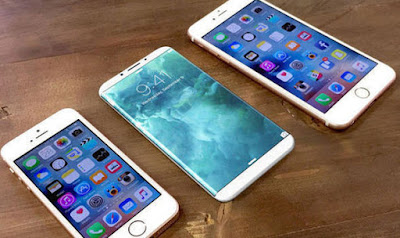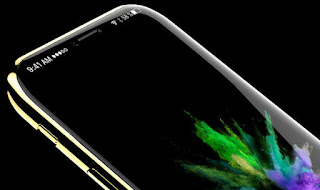APPLE iPhone 8 may be set to include some big changes, but it seems this favourite feature may still escape the chop
The iPhone 8 is shaping up to be one of the biggest launches of 2017.
Apple is reportedly hard at work on its next flagship device, which is set to be released later this year to mark the tenth anniversary of the original iPhone back in 2007.
Rumours and reports suggesting new features and functions for the iPhone 8 have been swirling around for some time as excitement build for the device.
But now it looks like one of the most popular iPhone 8 rumours could be all but confirmed
With many in the technology world expecting Apple to reveal a landmark device when it does launch the iPhone 8, a novel new design is one of the most highly-anticipated new features.
Apple is reportedly planning a major makeover for the iPhone 8, with a curved glass display spanning the entire width of the front panel.
Doing so would mean getting rid of the physical home button, currently used primarily to navigate back to the home screen, or to unlock the device with a fingerprint.
Multiple reports have claimed that Apple is planning to ditch the home button in favour of a touch-sensitive screen, but this has led to questions around what will happen to Apple’s TouchID system, used for fingerprint authentication.
The expected death of a physical home button could mean the end of TouchID as we currently know it, but a new report has claimed that the feature will instead live on in another way.
The patent could allow Apple to move its fingerprint detection around the iPhone 8
A new Apple patent, granted this week and revealed by AppleInsider, appears to show that TouchID will survive in a new form.
The patent for “acoustic imaging system architecture” will allow a physical fingerprint sensor, such as that seen in TouchID, to be replaced by a number of smaller sensors under the display.
These sensors, known as acoustic transducers, generate waves or pulses, which are transmitted through the glass display to detect when a foreign body, such as a finger, interrupts them.
The system is compact enough to be built under the display, but can also be situated in other areas, such as on the side of the device, or on the rear.
TouchID is currently used to authenticate iPhone actions such as paying using Apple Pay
Apple has not yet confirmed whether the technology will be present in the iPhone 8, but this could be the ideal solution for the next generation of biometric security.
Company design chief Jony Ive wants the iPhone 8 “to appear like a single sheet of glass,” according to previous reports, which this new development could offer.
Apple is also reportedly looking to distance itself from the curved aluminium design language it has used for the past three generations of iPhone, first introduced with iPhone 6.
With the Home Button gone, Apple can extended the display to the bottom of the phone – and possibly also include a curved edge, like that seen in the Galaxy S7 edge.
This would allow it to reduce the chunky bezels around the screen, and shrinking the overall footprint of the device.
The new 10th anniversary edition of the iPhone is also expected to be modelled with an all-glass design, similar to the iPhone 4 and 4S.
The iPhone 8 could be the most eye-catching Apple phone yet
Alternatively, Apple could be about to replace the home butting with something completely new instead.
Renowned Apple tipster and KGI Research analyst Ming-Chi Kuo recently claimed that the iPhone 8 will replace the current front screen design with a “function area” that will change depending on the app or feature being used.
Similar to the Touch Bar interface seen on the current premium MacBook laptops, the feature area could display volume levels to adjust your music, or precise controls for a game.
Discover more from Applygist Tech News
Subscribe to get the latest posts sent to your email.




